The best lizard to have as a pet often depends on individual preferences and experience levels, but generally, the Leopard Gecko stands out due to its manageable care requirements and docile nature. At PETS.EDU.VN, we aim to provide comprehensive guidance on selecting the right reptile companion, ensuring a harmonious and enriching experience for both you and your scaly friend. Whether you’re a novice reptile enthusiast or an experienced herpetologist, understanding the nuances of lizard care is crucial for their well-being, which is why we focus on providing high-quality reptile husbandry, pet lizard breeds, and exotic pet ownership information.
1. Unveiling the World of Pet Lizards: Finding Your Ideal Scaly Companion
Choosing the best lizard to have as a pet depends largely on your experience level, lifestyle, and the time you can dedicate to its care. Understanding the specific needs of different lizard species is essential for providing a healthy and enriching environment.
1.1. Leopard Gecko: The Quintessential Beginner Lizard
Leopard Geckos (Eublepharis macularius) are widely regarded as excellent pets for beginners due to their docile temperament, relatively simple care requirements, and fascinating array of colors and patterns. As nocturnal ground dwellers, they are easy to tame and come in different colors and patterns that are great for enthusiasts.
| Aspect | Details |
|---|---|
| Temperament | Docile, easy to handle |
| Size | 8-10 inches |
| Lifespan | 10-20 years |
| Enclosure | 10-20 gallon tank |
| Diet | Insectivorous (crickets, mealworms, waxworms) |
| Temperature | Basking spot: 88-92°F (31-33°C); Cool side: 75-80°F (24-27°C) |
| Humidity | 40-60% |
| Special Needs | Requires a humid hide for shedding; calcium and vitamin D3 supplementation |
| Ease of Care | Easy |
| Handling | Regular handling recommended to maintain docility. |
| Additional Notes | Known for their diverse morphs (color variations). |
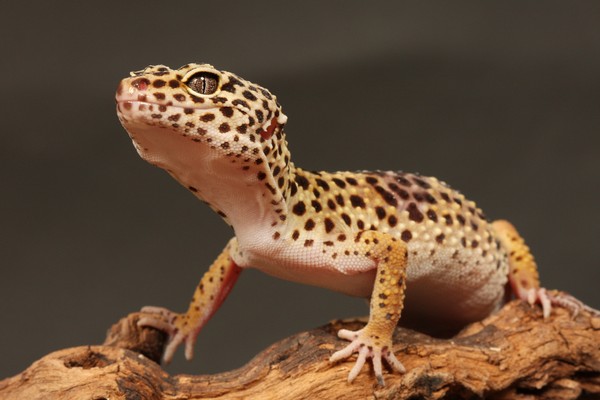
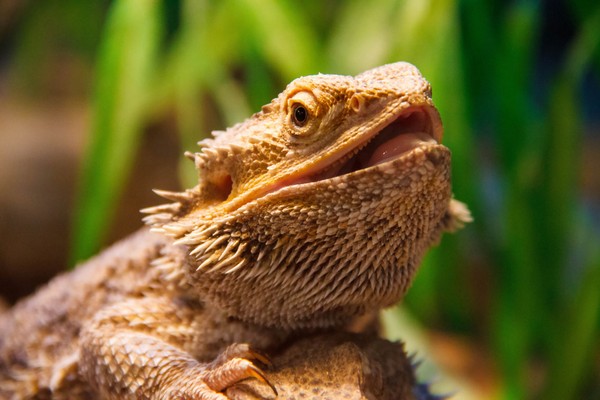
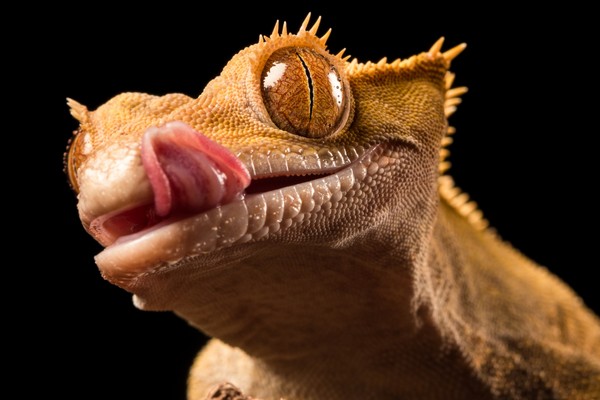
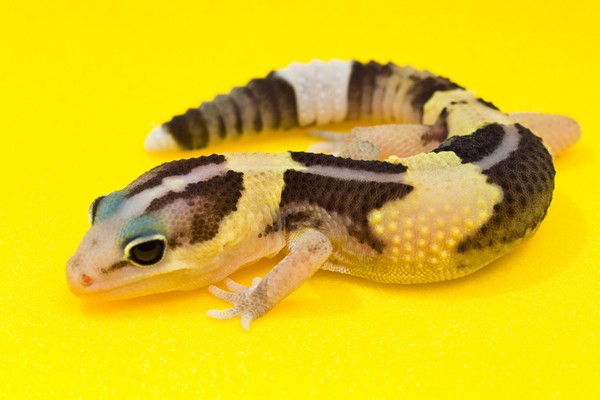
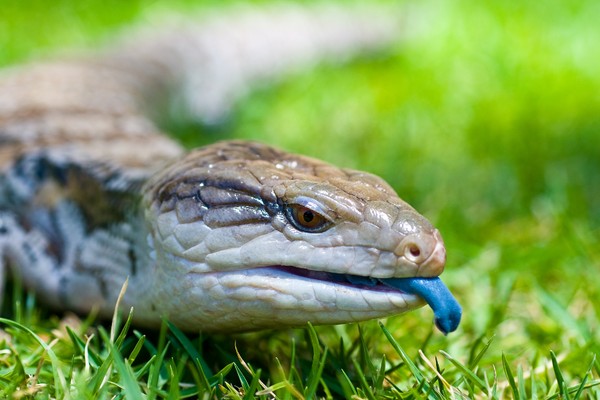
Why Leopard Geckos Make Great Pets:
- Easy to Handle: Their calm demeanor makes them suitable for handling, reducing the risk of bites or stress.
- Manageable Size: They don’t require large enclosures, making them ideal for those with limited space.
- Relatively Simple Diet: Their insectivorous diet is easy to manage with commercially available insects.
- Long Lifespan: With proper care, they can live for many years, providing long-term companionship.
Things to Consider:
- Nocturnal: They are most active at night, so you won’t see much activity during the day.
- Shedding: They require a humid hide to aid in shedding, which can be a bit messy.
- Live Food: They need live insects, which some owners may find unappealing.
1.2. Bearded Dragon: The Friendly and Docile Choice
Bearded Dragons (Pogona vitticeps) are popular among reptile enthusiasts due to their friendly and calm demeanor. While their care requirements are slightly more complex than Leopard Geckos, their docile nature makes them great for handling.
| Aspect | Details |
|---|---|
| Temperament | Docile, friendly |
| Size | 18-22 inches |
| Lifespan | 5-10 years |
| Enclosure | 55-75 gallon tank |
| Diet | Omnivorous (insects, vegetables, fruits) |
| Temperature | Basking spot: 95-105°F (35-41°C); Cool side: 80-85°F (27-29°C) |
| Humidity | 30-40% |
| Special Needs | Requires UVB and heat lamps; regular calcium and vitamin D3 supplementation; varied diet |
| Ease of Care | Intermediate |
| Handling | Regular handling essential to maintain docility. |
| Additional Notes | Known for their “beard,” which they can puff out when threatened or excited. |
Why Bearded Dragons Make Great Pets:
- Docile Temperament: They are known for their calm and friendly nature, making them easy to handle.
- Interactive: They are more active during the day and enjoy interacting with their owners.
- Varied Diet: Their omnivorous diet can be more appealing to some owners than a purely insectivorous diet.
- Relatively Long Lifespan: They can live for up to 10 years with proper care.
Things to Consider:
- Larger Enclosure: They require a larger enclosure than Leopard Geckos, which can be a significant investment.
- Specific Lighting: They need UVB and heat lamps, which require regular replacement.
- Varied Diet: Their diet requires a balance of insects, vegetables, and fruits, which can be time-consuming to prepare.
1.3. Crested Gecko: The Arboreal Beauty
Crested Geckos (Correlophus ciliatus) are a unique and fascinating species that have gained popularity as pets due to their low-maintenance diet and arboreal nature.
| Aspect | Details |
|---|---|
| Temperament | Docile, but can be skittish |
| Size | 6-8 inches |
| Lifespan | 15-20 years |
| Enclosure | 20-gallon tall tank |
| Diet | Commercially available crested gecko diet (CGD), insects (occasional) |
| Temperature | 72-82°F (22-28°C) |
| Humidity | 60-80% |
| Special Needs | Requires a vertical enclosure with climbing opportunities; regular misting to maintain humidity |
| Ease of Care | Easy |
| Handling | Gentle handling recommended; avoid grabbing by the tail |
| Additional Notes | Known for their crests above their eyes and their ability to drop their tails when stressed (though the tail does not regenerate); come in a wide variety of patterns and colors (morphs). |
Why Crested Geckos Make Great Pets:
- Low-Maintenance Diet: Their diet consists primarily of commercially available Crested Gecko Diet (CGD), which is easy to prepare and store.
- Arboreal Nature: They enjoy climbing, which makes for an interesting and active display in their enclosure.
- Long Lifespan: They can live for up to 20 years with proper care.
Things to Consider:
- Skittishness: They can be skittish and may jump or run when handled.
- Humidity Requirements: They need a higher humidity level than Leopard Geckos or Bearded Dragons, which requires regular misting.
- Tail Dropping: They can drop their tails when stressed, which is a defense mechanism.
1.4. African Fat-Tailed Gecko: The Gentle and Peaceful Choice
African Fat-Tailed Geckos (Hemitheconyx caudicinctus) are peaceful, affordable, and easy to manage, making them great pets for beginners.
| Aspect | Details |
|---|---|
| Temperament | Docile, gentle |
| Size | 7-9 inches |
| Lifespan | 15-20 years |
| Enclosure | 10-20 gallon tank |
| Diet | Insectivorous (crickets, mealworms, waxworms) |
| Temperature | Basking spot: 88-92°F (31-33°C); Cool side: 75-80°F (24-27°C) |
| Humidity | 40-60% |
| Special Needs | Requires a humid hide for shedding; calcium and vitamin D3 supplementation |
| Ease of Care | Easy |
| Handling | Regular handling recommended to maintain docility |
| Additional Notes | Known for their fat tail, which stores fat reserves; they can lose their tail if threatened, but it will grow back with a different color. |
Why African Fat-Tailed Geckos Make Great Pets:
- Docile Temperament: They are known for their gentle and peaceful nature, making them easy to handle.
- Relatively Simple Care: Their care requirements are similar to Leopard Geckos, making them suitable for beginners.
- Unique Appearance: Their fat tail and distinctive markings make them an interesting and attractive pet.
Things to Consider:
- Nocturnal: They are most active at night.
- Shedding: They require a humid hide to aid in shedding.
- Tail Loss: They can lose their tail if threatened, which can be stressful for the gecko.
1.5. Blue-Tongue Skink: The Intelligent and Curious Choice
Blue-Tongue Skinks (Tiliqua scincoides) are one of the best-loved pet reptiles, known for their unique blue tongue and relatively easy care.
| Aspect | Details |
|---|---|
| Temperament | Docile, curious |
| Size | 20-25 inches |
| Lifespan | 15-20 years |
| Enclosure | 40-75 gallon tank |
| Diet | Omnivorous (vegetables, fruits, insects, small mammals) |
| Temperature | Basking spot: 95-100°F (35-38°C); Cool side: 75-80°F (24-27°C) |
| Humidity | 40-60% |
| Special Needs | Requires a varied diet; UVB and heat lamps; regular handling to maintain docility |
| Ease of Care | Intermediate |
| Handling | Regular handling recommended to maintain docility |
| Additional Notes | Known for their distinctive blue tongue, which they use to startle predators; they are relatively intelligent. |
Why Blue-Tongue Skinks Make Great Pets:
- Docile Temperament: They are known for their calm and curious nature, making them easy to handle.
- Intelligent: They are relatively intelligent and can be trained to recognize their owners.
- Varied Diet: Their omnivorous diet can be more appealing to some owners.
- Long Lifespan: They can live for up to 20 years with proper care.
Things to Consider:
- Larger Enclosure: They require a larger enclosure than Leopard Geckos or Crested Geckos.
- Specific Lighting: They need UVB and heat lamps.
- Varied Diet: Their diet requires a balance of vegetables, fruits, insects, and small mammals, which can be time-consuming to prepare.
1.6. Other Lizards to Consider (With Caution)
While the lizards listed above are generally considered good choices for beginners, there are other species that may be suitable for more experienced keepers:
- Green Anole: Small and attractive, but fragile and easily stressed.
- Water Dragon: Requires a large enclosure with a water source and high humidity.
- Uromastyx: Requires high temperatures and a specialized diet.
- Tokay Gecko: Can be aggressive and difficult to handle.
- Chameleon: Requires very specific environmental conditions and is not recommended for beginners.
- Frilled Dragon: Requires a large enclosure and specialized care.
- Green Iguana: Grows very large and requires a significant commitment in terms of space and care.
2. Essential Factors to Consider Before Getting a Pet Lizard
Before bringing a pet lizard into your home, it’s crucial to consider several essential factors to ensure you can provide the best possible care.
2.1. Commitment Level
- Lifespan: Lizards have varying lifespans, ranging from a few years to several decades. Be prepared for a long-term commitment.
- Time: Lizards require daily care, including feeding, cleaning, and monitoring their environment.
- Financial: Setting up a proper enclosure, providing appropriate food, and covering potential veterinary costs can be expensive.
2.2. Enclosure Requirements
- Size: Different lizard species require different sized enclosures. Ensure you have enough space for the lizard to thrive.
- Type: Some lizards are arboreal (tree-dwelling) and need vertical enclosures with climbing opportunities, while others are terrestrial and need ground space.
- Heating and Lighting: Lizards require specific temperature gradients and UVB lighting to maintain their health.
2.3. Dietary Needs
- Insectivores: Some lizards eat only insects, which can be purchased from pet stores or online.
- Herbivores: Some lizards eat only plants, requiring a variety of leafy greens, vegetables, and fruits.
- Omnivores: Some lizards eat both insects and plants, requiring a balanced diet.
- Supplementation: Many lizards require calcium and vitamin D3 supplementation to prevent metabolic bone disease.
2.4. Handling and Temperament
- Docile vs. Aggressive: Some lizards are docile and easy to handle, while others can be aggressive and difficult to handle.
- Fragility: Some lizards are fragile and should be handled with care to avoid injury.
- Stress: Excessive handling can stress lizards, which can lead to health problems.
2.5. Legal Considerations
- Local Laws: Some states or municipalities may have laws regulating the ownership of certain lizard species.
- Permits: Some lizards may require permits to own.
- Ethical Sourcing: Ensure you purchase your lizard from a reputable breeder or rescue organization.
3. Creating the Perfect Habitat for Your Pet Lizard
Creating the perfect habitat for your pet lizard is crucial for its health and well-being. Here are some key elements to consider.
3.1. Enclosure Size and Type
- Size: The size of the enclosure should be appropriate for the lizard species and its size. A general rule of thumb is that the enclosure should be at least twice the length of the lizard.
- Type: Arboreal lizards need tall enclosures with climbing opportunities, while terrestrial lizards need wider enclosures with ground space.
3.2. Substrate
- Purpose: Substrate is the material that lines the bottom of the enclosure.
- Types: Suitable substrates include paper towels, reptile carpet, coconut fiber, and bioactive substrate mixes.
- Considerations: Avoid substrates that can be ingested, such as sand or small gravel.
3.3. Heating and Lighting
- Temperature Gradient: Lizards need a temperature gradient, with a warm basking spot and a cooler side.
- Heat Sources: Heat lamps, ceramic heat emitters, and under-tank heaters can be used to provide heat.
- UVB Lighting: UVB lighting is essential for lizards to synthesize vitamin D3, which is necessary for calcium absorption.
3.4. Humidity
- Importance: Different lizard species require different humidity levels.
- Maintaining Humidity: Humidity can be maintained by misting the enclosure, using a humidifier, or providing a water bowl.
- Monitoring Humidity: Use a hygrometer to monitor the humidity level.
3.5. Hides and Decor
- Purpose: Hides provide lizards with a sense of security and privacy.
- Types: Hides can be made from rocks, wood, or commercially available reptile hides.
- Decor: Decor such as branches, plants, and rocks can make the enclosure more visually appealing and provide climbing opportunities.
4. Nutritional Needs of Pet Lizards: Feeding Your Scaly Friend
Providing the proper nutrition is essential for the health and well-being of your pet lizard.
4.1. Insectivores
- Diet: Insectivorous lizards eat primarily insects.
- Insects: Common insects include crickets, mealworms, waxworms, Dubia roaches, and black soldier fly larvae.
- Gut Loading: Gut loading insects with nutritious foods before feeding them to your lizard is essential.
- Supplementation: Dust insects with calcium and vitamin D3 supplements.
4.2. Herbivores
- Diet: Herbivorous lizards eat primarily plants.
- Plants: Suitable plants include leafy greens, vegetables, and fruits.
- Variety: Provide a variety of plants to ensure your lizard gets all the necessary nutrients.
- Supplementation: Supplement with calcium and multivitamins.
4.3. Omnivores
- Diet: Omnivorous lizards eat both insects and plants.
- Balance: Provide a balanced diet of insects and plants to ensure your lizard gets all the necessary nutrients.
- Supplementation: Supplement with calcium and multivitamins.
4.4. Feeding Schedule
- Frequency: The frequency of feeding depends on the lizard species and its age.
- Portion Size: The portion size should be appropriate for the lizard’s size and activity level.
- Monitoring: Monitor your lizard’s weight and adjust the feeding schedule as needed.
5. Health and Wellness: Keeping Your Lizard Happy and Healthy
Ensuring the health and wellness of your pet lizard involves regular monitoring, proper care, and prompt attention to any signs of illness.
5.1. Recognizing Signs of Illness
- Lethargy: A decrease in activity level can indicate illness.
- Loss of Appetite: Refusal to eat can be a sign of various health problems.
- Weight Loss: Sudden weight loss can indicate underlying health issues.
- Abnormal Stool: Changes in stool consistency or color can be a sign of digestive problems.
- Difficulty Shedding: Problems shedding skin can indicate improper humidity levels or other health issues.
5.2. Common Health Problems
- Metabolic Bone Disease (MBD): Caused by calcium deficiency, MBD can lead to weakened bones and deformities.
- Respiratory Infections: Symptoms include wheezing, sneezing, and discharge from the nose or eyes.
- Parasites: Internal and external parasites can cause various health problems.
- Skin Infections: Bacterial or fungal infections can cause skin lesions and inflammation.
- Impaction: Blockage of the digestive tract can be caused by ingesting indigestible materials.
5.3. Preventative Care
- Regular Vet Checkups: Take your lizard to a reptile veterinarian for regular checkups.
- Proper Husbandry: Maintain proper temperature, humidity, and lighting levels in the enclosure.
- Cleanliness: Keep the enclosure clean and free of waste.
- Quarantine: Quarantine new lizards before introducing them to existing pets.
5.4. Emergency Care
- First Aid: Learn basic first aid techniques for lizards.
- Emergency Vet: Know the location of the nearest emergency reptile veterinarian.
- Transportation: Have a secure carrier for transporting your lizard to the vet.
6. Handling Techniques for Different Lizard Species
Proper handling techniques are crucial for the safety and well-being of your pet lizard.
6.1. Leopard Geckos and African Fat-Tailed Geckos
- Approach: Approach the gecko slowly and gently.
- Lifting: Scoop the gecko up from underneath, supporting its body.
- Holding: Hold the gecko gently but firmly, avoiding squeezing.
- Duration: Keep handling sessions short to avoid stressing the gecko.
6.2. Bearded Dragons and Blue-Tongue Skinks
- Approach: Approach the lizard slowly and calmly.
- Lifting: Support the lizard’s body with one hand under its chest and the other under its abdomen.
- Holding: Hold the lizard close to your body to provide a sense of security.
- Supervision: Supervise children when they are handling these lizards.
6.3. Crested Geckos
- Approach: Approach the gecko slowly and gently.
- Lifting: Gently coax the gecko onto your hand.
- Holding: Allow the gecko to grip your hand with its toes.
- Caution: Avoid grabbing the gecko by its tail, as it can drop it as a defense mechanism.
6.4. General Handling Tips
- Wash Hands: Always wash your hands before and after handling a lizard.
- Avoid Sudden Movements: Avoid sudden movements that could startle the lizard.
- Supervision: Supervise children when they are handling lizards.
- Respect: Respect the lizard’s boundaries and avoid handling it if it appears stressed.
7. Common Mistakes to Avoid When Keeping Lizards
Avoiding common mistakes can help ensure your pet lizard lives a long and healthy life.
7.1. Improper Enclosure Setup
- Inadequate Size: Providing an enclosure that is too small can stress the lizard and limit its activity.
- Incorrect Temperature: Failing to provide a proper temperature gradient can lead to health problems.
- Insufficient UVB Lighting: Insufficient UVB lighting can lead to metabolic bone disease.
7.2. Incorrect Diet
- Imbalanced Diet: Providing an imbalanced diet can lead to nutritional deficiencies.
- Overfeeding: Overfeeding can lead to obesity and other health problems.
- Underfeeding: Underfeeding can lead to malnutrition and stunted growth.
7.3. Mishandling
- Rough Handling: Handling a lizard too roughly can cause injury.
- Excessive Handling: Handling a lizard too frequently can cause stress.
- Ignoring Signs of Stress: Ignoring signs of stress can lead to health problems.
7.4. Lack of Veterinary Care
- Skipping Checkups: Skipping regular veterinary checkups can lead to undetected health problems.
- Delaying Treatment: Delaying treatment for illness can lead to more serious health problems.
- Self-Treating: Self-treating a lizard without veterinary guidance can be dangerous.
8. The Joy of Lizard Ownership: Building a Bond with Your Scaly Companion
While lizards may not be as cuddly as some other pets, they can still provide companionship and enjoyment.
8.1. Observing Behavior
- Fascination: Observing a lizard’s natural behaviors, such as hunting, basking, and exploring, can be fascinating.
- Learning: Learning about a lizard’s behavior can help you better understand its needs.
- Enrichment: Providing enrichment items, such as climbing structures and puzzle feeders, can stimulate a lizard’s mind and keep it entertained.
8.2. Interaction
- Handling: Some lizards enjoy being handled and will become accustomed to their owners.
- Feeding: Hand-feeding a lizard can create a bond and make it more accustomed to your presence.
- Training: Some lizards can be trained to perform simple tasks, such as coming when called.
8.3. Companionship
- Quiet Companions: Lizards are quiet pets that don’t require a lot of attention, making them ideal for people with busy lifestyles.
- Unique Pets: Lizards are unique and interesting pets that can spark conversation and intrigue.
- Educational: Owning a lizard can be an educational experience, teaching you about reptile biology and conservation.
9. Advanced Lizard Keeping: Exploring More Challenging Species
Once you have experience caring for beginner-level lizards, you may be interested in exploring more challenging species.
9.1. Chameleons
- Care Requirements: Chameleons require very specific environmental conditions, including high humidity, UVB lighting, and a varied diet.
- Temperament: Chameleons can be shy and easily stressed, so they are not recommended for beginners.
9.2. Geckos
- Care Requirements: Many gecko species have specialized care requirements, such as specific temperature and humidity levels.
- Temperament: Some gecko species can be aggressive and difficult to handle.
9.3. Monitors
- Care Requirements: Monitor lizards require large enclosures, a varied diet, and specialized care.
- Temperament: Monitor lizards can be aggressive and dangerous, so they are not recommended for inexperienced keepers.
9.4. Research
- Species-Specific: Thoroughly research the specific care requirements of any lizard species you are considering before acquiring it.
- Expert Advice: Seek advice from experienced keepers and reptile veterinarians.
- Commitment: Be prepared to commit the time, resources, and effort necessary to provide proper care for a challenging lizard species.
10. Resources for Pet Lizard Owners: Where to Find More Information
There are many resources available to help you learn more about pet lizard care.
10.1. Websites
- PETS.EDU.VN: Our website provides comprehensive information on lizard care, including species profiles, care guides, and health information.
- Reptile Forums: Online forums where you can connect with other reptile keepers and ask questions.
- Reptile Magazines: Publications that provide information on reptile care, breeding, and conservation.
10.2. Books
- The Leopard Gecko Manual by Philippe de Vosjoli
- Bearded Dragons: A Complete Guide to Captive Care by Philip Purser
- Crested Geckos: From Hatchling to Breeder by Allen Repashy
10.3. Veterinarians
- Reptile Veterinarians: Veterinarians who specialize in reptile care.
- Association of Reptilian and Amphibian Veterinarians (ARAV): A professional organization of reptile veterinarians.
10.4. Breeders and Rescue Organizations
- Reputable Breeders: Breeders who prioritize the health and well-being of their animals.
- Reptile Rescue Organizations: Organizations that rescue and rehabilitate reptiles.
At PETS.EDU.VN, we understand that choosing the best lizard as a pet requires careful consideration. Whether you are looking for low maintenance lizards, lizards with the friendliest personalities, or guidance on how to select the right pet reptile, our extensive resources are here to help. Remember, the ideal pet lizard is one that matches your lifestyle, experience, and commitment level. If you have specific concerns about reptile health or are looking for reptile veterinarians, feel free to consult our database or contact us for personalized assistance. Your journey into exotic pet ownership starts with informed choices and dedicated care! Contact us at 789 Paw Lane, Petville, CA 91234, United States. Whatsapp: +1 555-987-6543 or visit our website at PETS.EDU.VN.
Frequently Asked Questions About Pet Lizards
What is the best lizard to have as a pet if I’m a beginner?
Leopard Geckos are generally considered the best lizard for beginners due to their docile temperament, relatively simple care requirements, and manageable size.
What is the most low-maintenance lizard pet?
Crested Geckos are known for being relatively low-maintenance, primarily because they thrive on commercially available crested gecko diets (CGD) and require less frequent feeding compared to insectivorous lizards.
What are some friendly lizards good for handling?
Bearded Dragons are famous for their docile and friendly nature, making them one of the best lizards to handle, especially for those new to reptile keeping.
What should I feed my pet lizard to keep it healthy?
The diet depends on the lizard species. Leopard Geckos and African Fat-Tailed Geckos thrive on insects like crickets and mealworms, while Bearded Dragons need a mix of insects and leafy greens. Always research the specific dietary needs of your lizard.
How big of a tank do I need for my pet lizard?
The tank size depends on the lizard species. Leopard Geckos and African Fat-Tailed Geckos can live comfortably in a 20-gallon tank, while Bearded Dragons require a larger 55-75 gallon tank.
What kind of lighting does my pet lizard need?
Many lizards, especially Bearded Dragons, need both UVB and heat lamps to regulate their body temperature and synthesize vitamin D3. Proper lighting is crucial for their health.
How often should I handle my pet lizard?
This varies by species. Bearded Dragons and Leopard Geckos tolerate regular handling well, which helps them become more accustomed to human interaction. Crested Geckos can be more skittish and should be handled gently and less frequently.
What are the signs of a healthy pet lizard?
Signs of a healthy lizard include clear eyes, a healthy appetite, regular shedding, and an active demeanor. Any changes in behavior or physical appearance should be checked by a reptile veterinarian.
How long do pet lizards typically live?
The lifespan varies by species. Leopard Geckos and African Fat-Tailed Geckos can live 15-20 years, while Bearded Dragons typically live 5-10 years. Crested Geckos can also live 15-20 years with proper care.
What should I do if my pet lizard stops eating?
A loss of appetite can indicate various health issues, including stress, improper temperature, or illness. Consult with a reptile veterinarian if your lizard refuses to eat for more than a few days.
These insights, backed by pets.edu.vn, can guide you in making an informed decision and ensure a rewarding journey into the world of pet lizards.